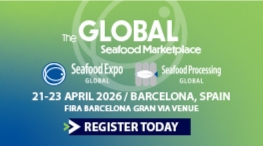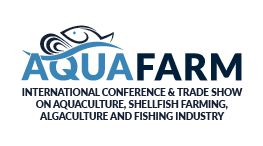This article was featured in Eurofish Magazine 5 2025.
The Hungarian Aquaculture and Fisheries Inter-branch Organisation, known by its Hungarian acronym MA-HAL, is the umbrella body that links pond farmers, recirculation aquaculture producers, processors, traders, researchers, and educational institutions across the country.
Formed in 2017 through the merger of two legacy associations, MA-HAL represents the majority (>90%) of the national aquaculture output. The organisation has a strategic cooperation agreement with the Hungarian mirror platform of the European Aquaculture Technology and Innovation Platform (HUNATiP).
A range of functions in service of its members
MA-HAL is an interbranch organisation rather than a producer organisation. As an interbranch body, it convenes actors across the supply chain to promote best practice, gather and analyse market information, forecast production potential, support coordinated marketing, and explore export opportunities. It also contributes expert input into national rulemaking, promotes fish consumption, strengthens origin and quality protection, backs vocational and higher-education training, and represents the sector in domestic committees and EU fora. Its functions include advocacy, coordination, knowledge transfer, and the encouragement of innovation through national and EU projects. The board is chaired by president Nándor Puskás and the organisation comprises over a hundred entities, including major farms, processors, universities, research institutes, and angling organisations whose activities encompass traditional pond management to recirculating systems, product development, and market building.
Much of MA-HAL’s day-to-day work is supporting a small but complex value chain. A portal on its website aggregates grant calls, legal updates, downloadable documentation, health guidance, training opportunities, and market price tools from the national research institute, making it a single point of reference for farm and factory managers. The publications section maintains current issues of Halászati Lapok, a trade journal, annual reports, health materials, and recipe booklets that translate sector messages for consumers. MA-HAL events mix public-facing promotion with -professional networking, such as a National Fish-Cooking Competition, a Fishermen’s Ball, and an Aquaculture Expo, alongside technical roundtables, fish-health training, and cross-border workshops.
The value of ecosystem services needs quantification
MA-HAL’s significance is clearest when set against the profile of Hungarian aquaculture itself. The sector has two main pillars. Intensive aquaculture produces roughly 4,500 tonnes a year, an estimated 95 percent of which is African catfish, with smaller contributions from trout and sturgeon; this -segment is increasingly vertically integrated from production through processing and retail. The larger pond-farming pillar covers about 27,000 hectares and yields some 18,000 tonnes of food fish centred on common carp, which accounts for roughly 82–85 percent of pond output. Pond systems are multifunctional assets. Beyond fish, they deliver ecological services, water management, and climate modulation. Holding water locally, slowing releases, and integrating pond outflows into wetlands or irrigation can buffer the country against increasingly volatile hydrology. At the same time, the biological engine of pond farming is plankton-based polyculture – an approach refined in Hungary over decades. Properly managed ponds generate the protein and micronutrients fish need from natural food webs, with limited supplemental grain and sparing use of artificial feeds. In the best managed farms, feed-to-gain ratios for grain additions can be kept to around 1.5 kg per kilogram of fish produced. This makes carp-based pond farming a low-trophic, resource-efficient model with biodiversity benefits that often exceed those of natural waters in terms of observed species richness around ponds.
Those non-productive functions are not free. Mr Puskás points out that current public support for pond multifunctionality has lagged comparable agricultural payments. Historical valuations set the worth of these ecosystem services at €204 per hectare in the 2000s under rural development funding, but current support levels are -closer to €100 per hectare while arable supports sit at roughly triple that. Together with István Szűcs, Director of the Institute of Economics at the University of Debrecen, MA-HAL is working on new calculations that recognise both ecological and climate services with a view to scientifically substantiating arguments for policy support at an appropriate level. Within pond production, herbivorous Chinese carps have lost share due to limited consumer demand at home, weak angling interest, and the disappearance of export -markets that once absorbed significant volumes. This is despite the nutritional advantages of species such as silver carp, which contain polyunsaturated fatty acids. MA-HAL’s response combines product development and promotion: align offerings with modern kitchens through ready-to-cook and ready-to-eat formats, and keep promoting the healthfulness of freshwater fish.
Fostering balance between sometimes competing objectives
Policy debates around alien species illustrate the need for an interbranch voice. Grass carp is treated as an alien species under conservation law and cannot be stocked into natural waters, yet some managers argue for a more nuanced ecological assessment given its potential role in non-mechanical vegetation control. MA-HAL’s forum helps keep that debate constructive, balancing conservation priorities with practical water-management needs. Climate volatility and wildlife interactions are also topics that MA-HAL is engaged in on behalf of its members. Pressure from fish-eating birds, notably cormorants, is considerable. Warmer weather allows them to hunt fish in winter as well, due to the lack of ice on the ponds. On the other hand, in warmer water the fish can be fed which accelerates growth. The sector is testing new winter-feeding regimes built around low-protein, high-energy diets with easily mobilised polyunsaturated fatty acids, alongside revised dosages and schedules. In parallel, digitalisation is moving beyond simple buoy-based monitoring toward early-warning systems that fuse in-pond data with weather forecasts to flag risk before catastrophic events occur. MA-HAL convenes the research partnerships behind these trials and helps disseminate outcomes across farms and processing plants.
Infrastructure modernisation is another priority. With precipitation patterns becoming less predictable, investments in controllable water infrastructure, water recirculation inside farm systems, and renewable energy are advancing. The aim is resilience: keep water in the landscape, reduce energy exposure, and stabilise production for processors who need reliable raw material. MA-HAL emphasises that it is not a producer organisation in the EU sense. Many Hungarian farmers are reluctant to pool marketing, for reasons of history and trust. The interbranch model is therefore a pragmatic fit that still delivers coordination, advocacy, and shared services without requiring members to sell through a single commercial vehicle. The broad membership profile helps MA-HAL mediate between production, conservation, and recreation, especially where pond operations intersect with biodiversity, water management, and public access. It also enables the organisation to push for the development of skills through vocational courses and continuing professional development.
Maintaining a dialogue between different interests
MA-HAL’s value to Hungarian aquaculture and fish processing lies in its coverage and its range. It bundles sector advocacy with technical coordination, quality assurance, training, events, and promotion. It moderates the debate between pond farmers and intensive catfish producers, factory managers and chefs, conservationists and water engineers. It represents the sector at home and abroad, and it offers practical tools that help farms and processors modernise in the face of climate stress and shifting markets. In a country where aquaculture’s footprint is small but where ponds play outsized ecological and hydrological roles, MA-HAL plays a critical role thanks to the depth and breadth of its membership.









